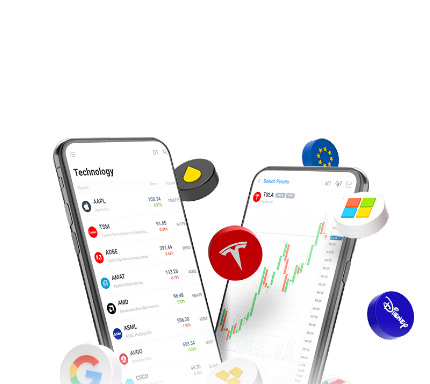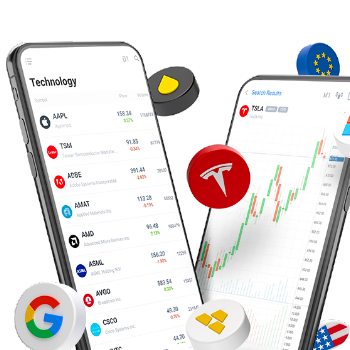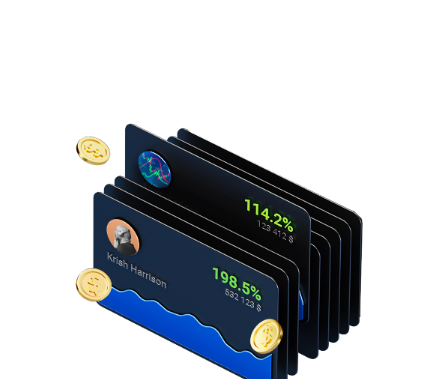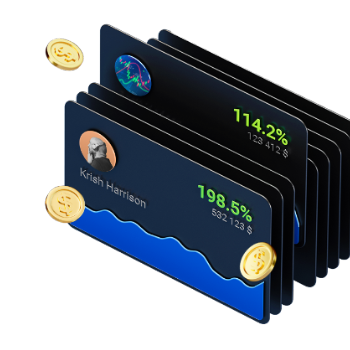How to Choose a Timeframe for Trading?

8 minutes for reading
In this review, we will speak about choosing a timeframe for trading. This is an important part of your trading strategy.
What is a timeframe?
A timeframe is a time interval for representing the quotations on the chart. As a rule, price movement is represented on the chart as candlesticks (or bars) with the same period, corresponding to the chosen timeframe. The larger the timeframe, the bigger "volume" of the price movement is shown by each candlestick on the chart.
You may set up any timeframe for the price chart but normally traders use basic conventional timeframes:
- MN is a monthly timeframe, each candlestick shows the price movement during a month.
- W1 is a weekly timeframe, each candlestick shows the price movement during a week.
- D1 is a daily timeframe, each candlestick shows the price movement during a day.
- H4 is a four-hour timeframe, each candlestick shows the price movement during four hours.
- H1 is an hourly timeframe, each candlestick shows the price movement during an hour.
- M30 is a 30-minute timeframe, each candlestick shows the price movement during 30 minutes.
- M15 is a 15-minute timeframe, each candlestick shows the price movement during 15 minutes.
- M5 is a 5-minute timeframe, each candlestick shows the price movement during 5 minutes.
- M1 is a minute timeframe, each candlestick shows the price movement during a minute.
The timeframe is chosen in the trading terminal. In such popular terminals as MetaTrader 4 and MetaTrader 5, there is a table of active buttons for the main timeframes on the Instrument board. Left-clicking the buttons, you can quickly switch from one timeframe to another.
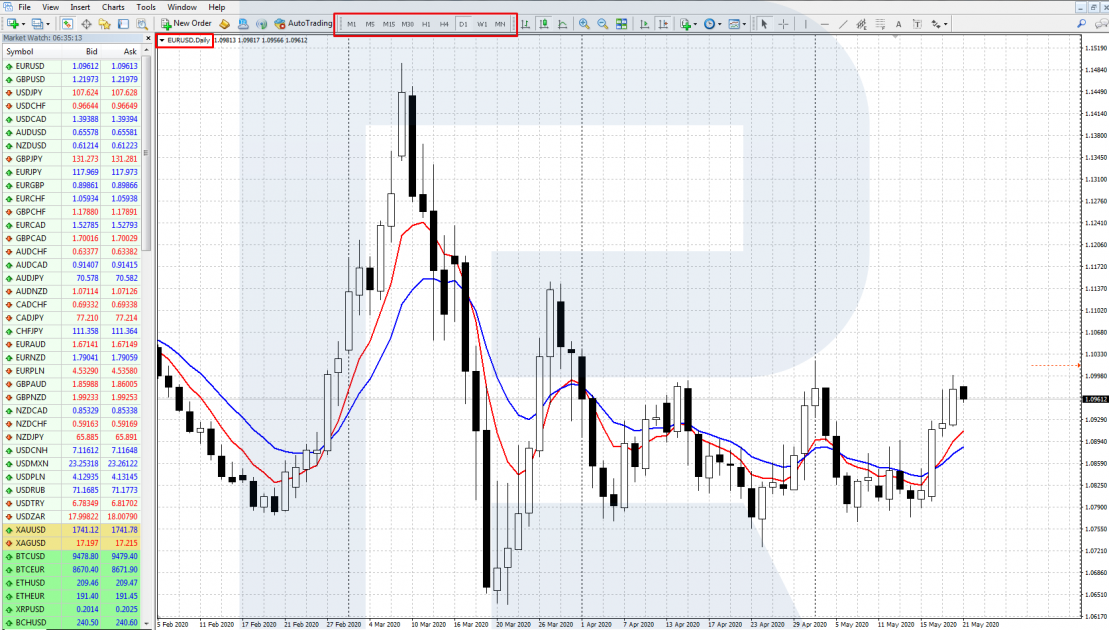
How to choose a timeframe?
To analyze the price chart, we normally use not one but several timeframes. Analyzing the price movements on several timeframes, the trader receives a vaster picture of the dynamics of the financial instrument. This helps to forecast price movements for different intervals depending on your trading strategy.
While for the general analysis of your financial instrument you may use all timeframes at once, for making trades you need a "narrower horizon". In many trend strategies based on the main rules of tech analysis, we usually choose two timeframes:
- The main timeframe is a longer one, on which we use fundamental and/or technical analysis to asses the current state and perspective of the financial instrument. On this timeframe, we define the actual trend and the direction for trading.
- An additional timeframe is a smaller timeframe that gives signals to enter (and sometimes exit) the market in the direction chosen on the larger timeframe. A trade may be opened based on the signals from indicators, levels, tech analysis or Price Action patterns, etc.
To make up your mind about the timeframes for trading, you must decide upon your trading style. Pay attention to two important criteria:
- The amount of time you can devote to trading
- The sum you can deposit on your account
These two criteria taken together will show which trading style is preferable for you: long-term, medium-term, or short-term trading. In a rare case when you have a lot of free time and a substantial deposit, you may choose any trading style that seems comfortable and/or profitable to you.
Timeframes for long-term trading
Long-term trading normally means a relatively small number of trades that remain in the market for a long time - from several weeks to several months. This trading style is similar to investing: you choose an instrument that promises a substantial movement and make decision mostly based on fundamental analysis.
Criteria for long-term trading:
- Little time for trading: you spend less than 1/5 of your worktime on it.
- The deposit is large, you may enter the market with a large position for a long term, place big Stop Losses, and withstand deep drawdowns (from 50,000 USD).
As the main timeframe for long-term trading, on which you will define the main trend and its aim, the MN (monthly) and W1 (weekly) timeframes will be the best. As an additional timeframe for finding entry points, use D1. In the picture, you can see these timeframes in use:
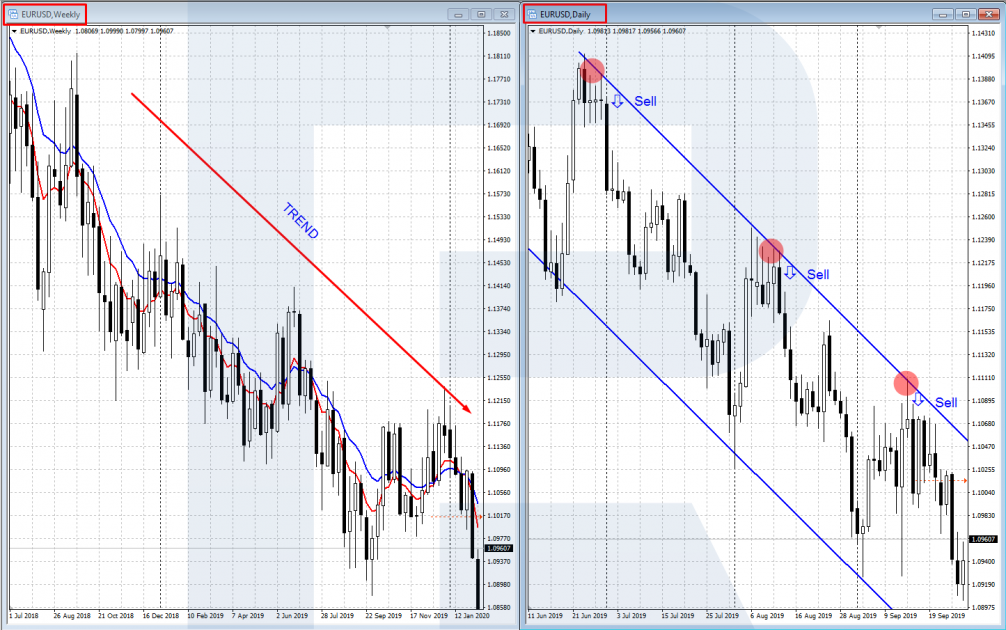
Timeframes for medium-term trading
The planning horizon for medium-term trading is one day to one month. There are more trades compared to long-term trading, and the trades become less lengthy. The idea of medium-term trading is to catch a good daily impulse of price movement, collect the profit, and wait for the next impulse.
The criteria for medium-term trading are as follows:
- You have a moderate amount of time for trading, roughly 1/5 t0 1/2 of your work time.
- Your deposit is also moderate, allowing you to open weighty trades planned for several days (10,000 to 50,000 USD).
As the main timeframe for defining the actual trend and its aims, you may use D1 or H4. As the smaller additional timeframe giving you entry points, use H4 or H1. An example of these timeframes in use is below:
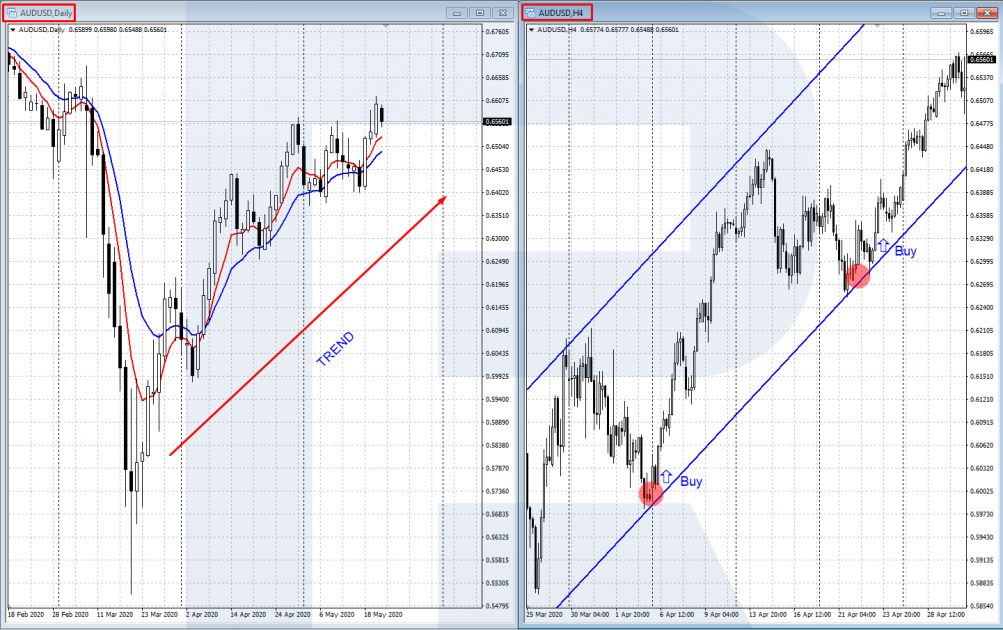
Timeframes for short-term trading
Short-term trading must be the most widespread type of trading. It is more available because you can trade even with a small deposit, however, it requires more time and iron-cast discipline. Short-term trading includes such types as:
- Swing trading: trades last from several hours to two-three days.
- Daytrading: trading intraday, without transferring your position to the next day.
- Scalping presumes a lot of short-term trades intraday with a profit of several points.
Criteria for short-term trading are as follows:
- A lot of time for trading - from 1/2 of your work time to full employment.
- A small or moderate deposit which allows you trades with small Stop Losses and short-term aims (up to 10,000 USD).
For short-term trading, there are more timeframe options. As the main one, you may choose M30, H1, H4, or D1. As an additional timeframe, choose out of M1, M5, M15, M30, and H1. You may see an example of short-term trading with these timeframes below:
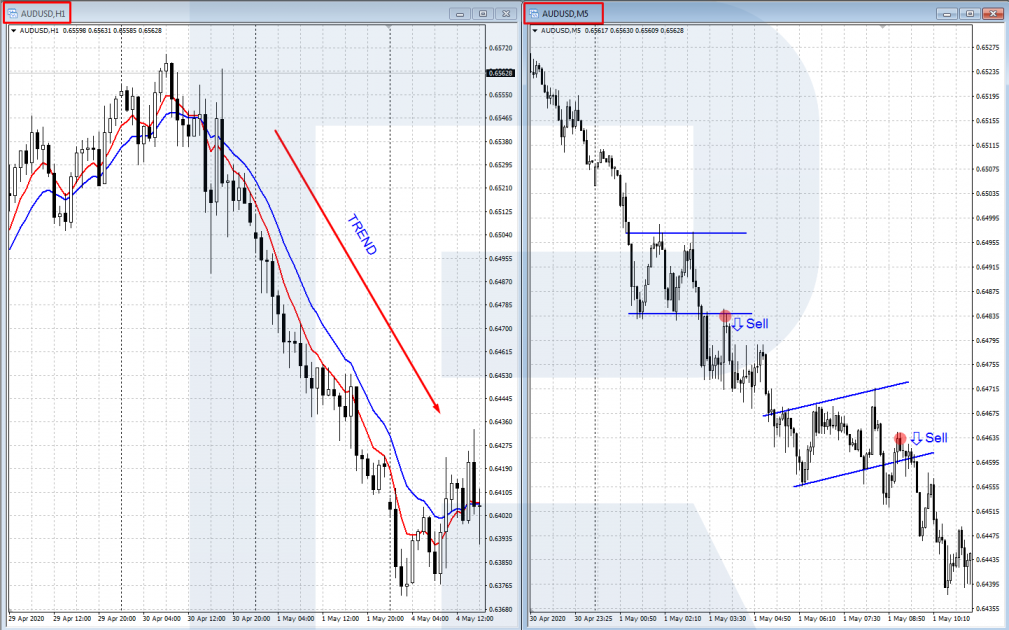
Bottom line
The choice of your timeframe is crucial for your trading strategy. For the general market analysis, you can use all timeframes but for opening trades, choose those that suit your trading style. Most often, trading strategies use two timeframes: the main and additional ones.
As an example of the use of two timeframes, you may get acquainted with the Triple Screen trading system by a successful trader and popular author Alexander Elder.
